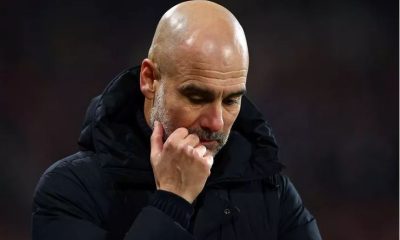NATO’s Secretary General has said this week’s Madrid summit will agree the alliance’s most significant transformation for a generation, putting 300,000 troops at high readiness in response to Russia’s invasion of Ukraine.
Jens Stoltenberg said the military alliance’s forces in the Baltic States and five other frontline countries would be increased “up to brigade levels” – doubled or tripled to between 3,000 and 5,000 troops.
That would amount to “the biggest overhaul of our collective defence and deterrence since the cold war,” Stoltenberg said before the meeting of the 30-country alliance, which runs from Tuesday to Thursday this week.
The rapid-reaction NATO Response Force currently numbers up to 40,000, and the proposed change amounts to a broad revision in response to Russian militarisation.
Under the plans, NATO will also move stocks of munitions and other supplies farther east, a transition due to be completed in 2023.
The Norwegian Secretary General conceded he could not make any promises about the progress of applications by Sweden and Finland to join NATO, because objections raised by Turkey to their membership remained unresolved.
READ ALSO: Russia kills 38 Nigerians fighting in Ukraine, many return home
Stoltenberg said Turkey’s president, Recep Tayyip Erdoğan, had agreed to meet the Swedish prime minister, Magdalena Andersson, and Finland’s president, Sauli Niinistö, on Tuesday in Madrid to try to resolve the issue.
But he played down hopes of a breakthrough at the meeting on the margins of the NATO event. “It’s too early to say what kind of progress you can make by the summit,” he told a press conference.
Turkey has said it will block the applications of Sweden and Finland unless it receives satisfactory assurances that the Nordic countries are willing to address what it regards as support for Kurdish groups it designates as terrorist organisations.
Later on Monday, Andersson said she still hoped a last-minute deal could be reached, after a day of contacts between officials of the three countries in Brussels.
Ukraine’s president, Volodymyr Zelenskiy, will address the summit on Wednesday morning, where he is expected to follow on from a plea made on Monday at the G7 meeting in Germany for western countries to provide arms so the war does not “drag on over winter”.
READ ALSO: Russia’s military plane crashes, kills 4
Stoltenberg said NATO would agree “a strengthened, comprehensive assistance package” for Kyiv, including immediate help to “secure communications, anti-drone systems and fuel” and longer-term assistance in transitioning from Soviet standard arms and equipment to their western equivalents.
But while the state of the war is likely to dominate the summit, NATO itself will only offer non-lethal aid because its members do not want the alliance to enter into a fully fledged war with Russia. Arms supplies are instead made by member states.
NATO maintains eight battle groups across Eastern Europe, aimed at acting as an initial frontline defence in the event of a Russian invasion. Four are in the Baltic States and Poland, and these were supplemented by the creation of four more in Bulgaria, Hungary, Romania and Slovakia after the attack on Ukraine.

 Business7 days ago
Business7 days ago
 Business6 days ago
Business6 days ago
 Education6 days ago
Education6 days ago
 Crime7 days ago
Crime7 days ago
 Football12 hours ago
Football12 hours ago
 Covid-196 days ago
Covid-196 days ago
 Business7 days ago
Business7 days ago
 Latest4 days ago
Latest4 days ago

